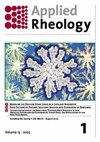GIS-based landslide susceptibility mapping using frequency ratio and index of entropy models for She County of Anhui Province, China
IF 1.8
4区 工程技术
Q1 MECHANICS
引用次数: 5
Abstract
Abstract Landslides caused countless economic and casualty losses in China, especially in mountainous and hilly areas. Landslide susceptibility mapping is an important approach and tool for landslide disaster prevention and control. This study presents a landslide susceptibility assessment using frequency ratio (FR) and index of entropy (IOE) models within a geographical information system for She County in the mountainous region of South Anhui, China. First, the landslide locations were ascertained in the study area using historical landslide records, aerial photographs, and multiple field surveys. In all, 502 landslides were identified and randomly divided into two groups as training (70%) and validation (30%) datasets. Additionally, the landslide-influencing factors, including slope angle, slope aspect, curvature, landform, lithology, distance to faults, distance to roads, distance to rivers, rainfall, and normalized difference vegetation index, were selected and their relative importance and weights were determined by FR and IOE models. The results show that the very high and high susceptibility classes cover nearly 50% of the study area. Finally, the comprehensive performance of the two models was validated and compared using receiver operating characteristic curves. The results demonstrated that the IOE model with the area under the curve (AUC) of 0.802, which is slightly better in prediction than the FR model (AUC = 0.786). The interpretation of the susceptibility map indicated that landform, slope degree, and distance to rivers plays a major role in landslide occurrence and distribution. The research results can be used for preliminary land use planning and hazard mitigation purposes.基于GIS的安徽涉县滑坡易发性频率比和熵指数模型制图
山体滑坡在中国造成了无数的经济和人员伤亡损失,特别是在山区和丘陵地区。滑坡易感性制图是滑坡灾害防治的重要手段和工具。本文采用频率比(FR)和熵指数(IOE)模型在地理信息系统中对皖南山区歙县进行了滑坡易感性评价。首先,利用滑坡历史记录、航空照片和多次实地调查,确定了研究区内的滑坡位置。总共识别了502个滑坡,并随机分为两组,分别作为训练(70%)和验证(30%)数据集。选取坡角、坡向、曲率、地貌、岩性、断层距离、道路距离、河流距离、降雨量、归一化植被指数等滑坡影响因子,并通过FR和IOE模型确定其相对重要性和权重。结果表明,高、高易感等级覆盖了近50%的研究区。最后,利用接收机工作特性曲线对两种模型的综合性能进行了验证和比较。结果表明,IOE模型的曲线下面积(AUC)为0.802,预测效果略优于FR模型(AUC = 0.786)。敏感性图的解释表明,地形、坡度和与河流的距离是影响滑坡发生和分布的主要因素。研究结果可用于初步土地利用规划和减灾目的。
本文章由计算机程序翻译,如有差异,请以英文原文为准。
求助全文
约1分钟内获得全文
求助全文
来源期刊

Applied Rheology
物理-力学
CiteScore
3.00
自引率
5.60%
发文量
7
审稿时长
>12 weeks
期刊介绍:
Applied Rheology is a peer-reviewed, open access, electronic journal devoted to the publication in the field of applied rheology. The journal provides the readers with free, instant, and permanent access to all content worldwide; and the authors with extensive promotion of published articles, long-time preservation, language-correction services, no space constraints and immediate publication.
 求助内容:
求助内容: 应助结果提醒方式:
应助结果提醒方式:


